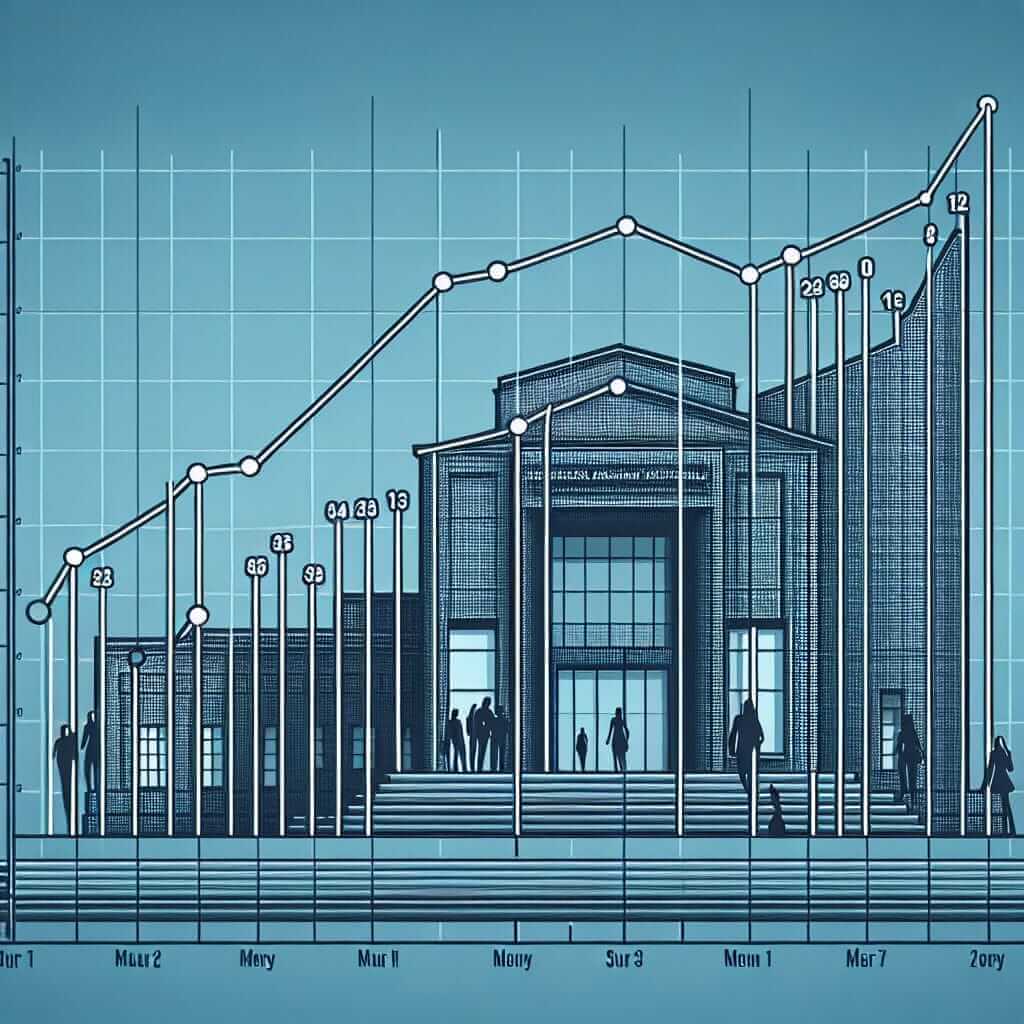The IELTS Writing Task 1 requires you to write a 150-word report summarizing a visual representation of information, such as a graph, chart, table, map, or diagram. Understanding the common question types is crucial for effective preparation and achieving a high band score. This article will delve into the different types of IELTS Writing Task 1 questions, providing examples, tips, and strategies to help you excel in this section.
Nội dung bài viết
Types of IELTS Writing Task 1 Questions
The IELTS Writing Task 1 questions typically fall into the following categories:
1. Line Graphs
Line graphs depict trends over a period of time. You might be asked to describe:
- Overall trends: Is the trend upward, downward, or fluctuating?
- Significant changes: Are there any sharp increases, decreases, or peaks?
- Points of comparison: How do different data points compare to each other?
Example:
The line graph shows the number of visitors to a museum over a year.

Sample Task: Summarize the information by selecting and reporting the main features, and make comparisons where relevant.
2. Bar Charts
Bar charts compare different categories of data. You may need to:
- Identify the highest and lowest values.
- Compare the values of different categories.
- Describe any significant differences or similarities.
Example:
The bar chart illustrates the percentage of people in different age groups who use social media.
Sample Task: Summarize the information by selecting and reporting the main features, and make comparisons where relevant.
3. Pie Charts
Pie charts show proportions and percentages of a whole. You might be asked to:
- Describe the largest and smallest segments.
- Compare the proportions of different segments.
- Highlight any significant changes in proportions over time (if applicable).
Example:
The pie charts illustrate the proportion of energy produced from different sources in a country in 1995 and 2015.
Sample Task: Summarize the information by selecting and reporting the main features, and make comparisons where relevant.
4. Tables
Tables present data in rows and columns. You may be asked to:
- Identify the highest and lowest values in different categories.
- Compare data across rows and columns.
- Draw conclusions based on the data presented.
Example:
The table shows the average monthly temperatures in three different cities.
Sample Task: Summarize the information by selecting and reporting the main features, and make comparisons where relevant.
5. Process Diagrams
Process diagrams illustrate the stages of a process or how something works. You will need to:
- Describe the sequence of stages.
- Explain the function of each stage.
- Use appropriate sequencing words (e.g., firstly, secondly, next, finally).
Example:
The diagram shows the process of making chocolate.
Sample Task: Summarize the information by selecting and reporting the main features, and make comparisons where relevant.
6. Maps
Maps show geographical locations and changes over time. You might be asked to:
- Describe the location of different features.
- Explain changes in a place over time.
- Compare different locations.
Example:
The maps show the development of a town from 1950 to 2010.
Sample Task: Summarize the information by selecting and reporting the main features, and make comparisons where relevant.
Common Mistakes to Avoid
- Misinterpreting the data: Carefully analyze the visual information before writing.
- Providing opinions or personal beliefs: Stick to factual reporting.
- Including irrelevant information: Focus on the key features and trends.
- Using informal language: Maintain a formal and academic tone.
- Neglecting grammar and vocabulary: Use a range of grammatical structures and vocabulary accurately.
Tips for Success
- Practice regularly: Familiarize yourself with different question types and practice summarizing visual data.
- Analyze the data carefully: Identify the key trends, patterns, and significant features.
- Structure your response: Use a clear and logical structure (introduction, overview, body paragraphs, conclusion).
- Use appropriate vocabulary: Employ a range of vocabulary related to trends, comparisons, and data interpretation.
- Proofread carefully: Check for grammar, spelling, and punctuation errors.
Conclusion
By understanding the common types of IELTS Writing Task 1 questions and practicing regularly, you can approach this section with confidence. Remember to analyze the data meticulously, structure your response effectively, and use accurate language to achieve your desired band score. Good luck!